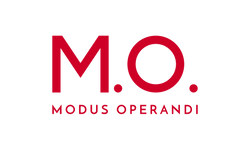Navigating dress codes can be a daunting task for men, as each occasion comes with its own set of sartorial rules and expectations. From casual gatherings to formal events, understanding the nuances of dress codes is essential for making a stylish and appropriate impression. In this blog, we'll explore the different dress codes and provide guidance on how men should dress for each occasion with confidence and ease.

1. Casual Dress Code
The casual dress code is relaxed and informal, allowing for comfortable and laid-back attire. For casual gatherings such as weekend outings, backyard barbecues, or casual dinners with friends, men can opt for smart-casual attire that strikes the perfect balance between comfort and style. This may include:
- A well-fitted polo shirt or button-down shirt
- Casual trousers or chinos
- Denim jeans (in good condition)
- Casual footwear such as sneakers, loafers, or boat shoes
Accessories such as a stylish watch, sunglasses, or a casual belt can add a touch of personality to the outfit while still maintaining a relaxed vibe.
2. Business Casual Dress Code
Business casual attire is a step up from casual wear, offering a more polished and professional look suitable for workplace settings or semi-formal events. Men should aim for a smart yet relaxed ensemble that exudes professionalism without being overly formal. Business casual attire may include:
- A collared shirt (button-down or polo shirt)
- Dress trousers or chinos
- A blazer or sport coat (optional)
- Leather dress shoes or loafers
Accessories such as a leather belt, wristwatch, and pocket square can elevate the outfit while maintaining a polished appearance suitable for business settings.
3. Smart Casual Dress Code
Smart casual attire is a versatile and sophisticated dress code suitable for a wide range of occasions, from upscale dinners to evening events. Men should aim for a refined yet relaxed look that balances elegance with comfort. Smart casual attire may include:
- A well-tailored button-down shirt or knit polo shirt
- Tailored trousers or chinos
- A blazer or sports jacket (optional)
- Leather dress shoes or suede loafers
Accessories such as a leather belt, tie (optional), pocket square, and wristwatch can add a touch of sophistication to the outfit, elevating it for more formal settings.
4. Formal Dress Code
Formal attire is reserved for special occasions that require a sophisticated and polished look, such as weddings, galas, or black-tie events. Men should opt for classic and timeless ensembles that exude elegance and refinement. Formal attire may include:
- A tailored suit in dark colours such as black, navy, or charcoal grey
- A coordinating tie (silk or satin)
- Leather dress shoes (black or brown)
- Optional accessories such as cufflinks, a pocket square, and a dress watch
For black-tie events, a tuxedo with a black bow tie is the standard attire, while a white dinner jacket with a black bow tie is appropriate for semi-formal events held during the summer months.
In conclusion, understanding the nuances of different dress codes is essential for men to dress appropriately for every occasion. Whether it's embracing a relaxed and casual look for weekend gatherings or donning a sophisticated ensemble for formal events, adhering to dress codes ensures that men make a stylish and appropriate impression in any setting. By following these guidelines and selecting the appropriate attire for each occasion, men can confidently navigate dress codes and make a memorable sartorial statement wherever they go.
